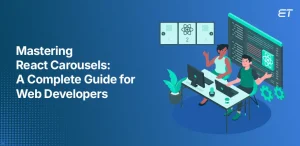2020 was a breakthrough year for mobile apps. The amount of time people spent on their phones almost doubled overnight, helping apps from streams such as online learning, entertainment, gaming, productivity etc. rack up millions of downloads and high usage times per session.
But one category that neatly flew under the radar was, and continues to be, fitness and health. Fitness apps are in vogue more than ever before as people were forced to exercise indoors for most of last year. It also helped that many fitness experts readily switched to these apps with a subscription or per-session pricing model.
And the numbers bear out this trend too. A survey by AdColony found that by June 2020, 75% of respondents used these apps to achieve their health goals. The number before the pandemic struck – 50%. And as with most consumer behaviour driven by the pandemic, the fitness app wave is unlikely to ebb any time soon.
So, if you’re planning to carve a slice of the $15 billion (by 2027) global fitness app pie for yourself, now is the perfect time to begin. But what’s involved in the development of a fitness app? More importantly, how much does it cost to develop a fitness app? We answer these and other questions related to mobile app development services in this post.
What Factors Are Involved in the Development of a Mobile Fitness App?
The cost of your fitness app development has three main aspects, the type of fitness app you want to build, its main features, and the actual development process.
Types of Fitness Apps
Exercise Apps – As a custom mobile app development company, this is the most common fitness app we make. It also accounts for almost 75% of the fitness app category. These apps have also evolved over the years and now provide customised exercise consultations for paying users by tying up with certified fitness experts.
Diet and Nutrition Apps – Calorie deficit eating and calorie counting are gaining traction with more and more people due to their low-maintenance and easier-on-the-body nature. This is also a simpler app to build with more focus on content and presentation than other fitness apps.
Activity Tracker Apps – These apps owe their rise to the popularity of wearables, which have grown more technologically advanced each passing year, and track a user’s performance during walking, running, cycling, swimming etc.
Fitness Expert Apps – These apps use video conferencing and ancillary features to connect users with their chosen fitness professional from a pool of experts, similar to how you’d download an app from the app store based on its description, pictures, features, and customer reviews.
Mental Health Apps – Mental wellbeing has definitively entered the mainstream conversation as pandemic-induced isolation and stress took their toll on everyone. These apps comprise a mix of ready content and paid consultations with qualified mental health professionals and therapists.
Read more: App Monetization: 6 Ways To Make Your App A Money Spinner
Main Features of Fitness Apps
As the ecosystem matures, users have grown to expect a certain minimum level of features in any fitness app. Therefore, we’ve listed these for our estimate on how much does it cost to create a fitness app.
Log in and Sign up/account creation: A self-explanatory step, in addition to creating their account and password, you should also include social media-enabled login and account creation for your users. This is also the stage where you collect details such as age, weight, height etc.
Exercise and activity content: You can bundle in a wide variety of workout content (video, audio, and textual) across varying degrees of intensity, duration, and complexity. Successful fitness apps often use this route to monetize by charging their users for access to exclusive workout content from professional trainers.
Gamification and interactivity: Pursuing better health is often a lonely activity and your users can often lose motivation before achieving their goals. This is where you can hire dedicated developer to gamify the entire process through inducements such as rewards, interactive bot-driven conversations, rewards, badges, and community-wide ranking lists.
Social media integration: The ability to share progress with others has two direct benefits, i) it gives your user the validation to continue pursuing their health goals through your app, ii) the network externality effect of this sharing can bring more users to your app. A perfect win-win.
Activity tracking: As wearables get more advanced, cue the number of trackers that come with an SpO2 sensor nowadays, your app will be expected to track metrics such as the number of steps walked, distance covered (when walking, running, cycling etc.), heart rate (average and peak), calories burned, duration and intensity of workouts/sleep, across different physical exercises.
Push notifications: An extension of the interactivity we talked about above, notifications will help you remind users about their forthcoming workouts, plans, eating schedule, and even warn them about prolonged inactivity.
Geolocation: Mostly used outdoors, this feature helps your users create workout routines/routes, monitor current location, and automatically track distance while compensating for interruptions and rest intervals.
Read more: Mobile Cloud Apps: The Next Frontier for Mobile App Development
How Development Affects Your Fitness App’s Cost?
In addition to the features mentioned above, the final cost of developing a fitness app also depends upon certain development process choices you make. Let’s briefly cover some of these.
Platform: You can develop a mobile fitness app for one or more of the three dominant platforms, Android, iOS, and hybrid. Needless to say, your outgo will double if you decide to build separate apps for iOS and Android. But with a cross-platform hybrid solution like Flutter, you can slash the final cost by up to 50%. On the flip side, a hybrid might not be ideal if you’re app is too complex.
Design: Your app’s UI/UX design holds the key to its success. In today’s digital world where multiple apps compete for your user’s attention, just an eye-catching layout won’t cut ice. Instead, a deeper understanding of consumer psychology and design thinking is necessary to create a UI/UX that brings new users and helps you achieve a better conversion rate. Depending on the platform and mobile app development services you choose, expect to pay for between 80-120 hours of UI/UX design work.
Development: Where you hire dedicated developer from is the main determiner of this expense. Developers from regions such as North America and western Europe are the most expensive of the lot ($80-250 per hour), as the supply of quality talent is lower in those regions. The opposite is true for regions and countries such as Eastern Europe, Africa, and India, where quality development talent is available at much more affordable rates ($20-80 per hour).
Testing: A good QA process will ensure the quality of your fitness app. The more time testers spend interacting with and testing your app, the greater the chances of catching bugs and resolving them before release. While you can negotiate the testing span with your developer, expect to pay for roughly 200-300 of hours testing.
Read more: Flutter vs React Native 2020: Which Cross-Platform Mobile Framework Is Right for You?
So, What’s the Fitness App Development Cost, After All?
Considering all these factors, and without resorting to the qualifier ‘depends’, we’d say the cost of building a fitness app can start at $25,000, with no upper limit as the final cost is contingent on the features you choose.
Although the fitness app market is now fiercely competitive, you can make a success out of your app idea by analysing your competitors, defining the target audience, learning your users’ needs and preferences, and your business goals. This planning will also help you understand which functionalities your app should have, which will help you get a quick estimate when talking to a custom mobile app development company.
If you’d like to know more about this process, reach out to us now and get a free ‘no obligations’ quote from mobile app development experts.
Thank you for reading! If you liked this post, subscribe to get informative posts about web and mobile development, data analytics, and eCommerce delivered to your inbox.

Digital Marketing Manager
Responsible for developing and managing web presence, Sarah has been associated with eLuminous Technologies for 7+ years. Strategic and innovative with a passion for Content Marketing and enhancing brand awareness. Administered all business marketing operations and advertisement campaigns that eventually increased web traffic. She works under the motto “Think like a Publisher, not a Marketer.”



